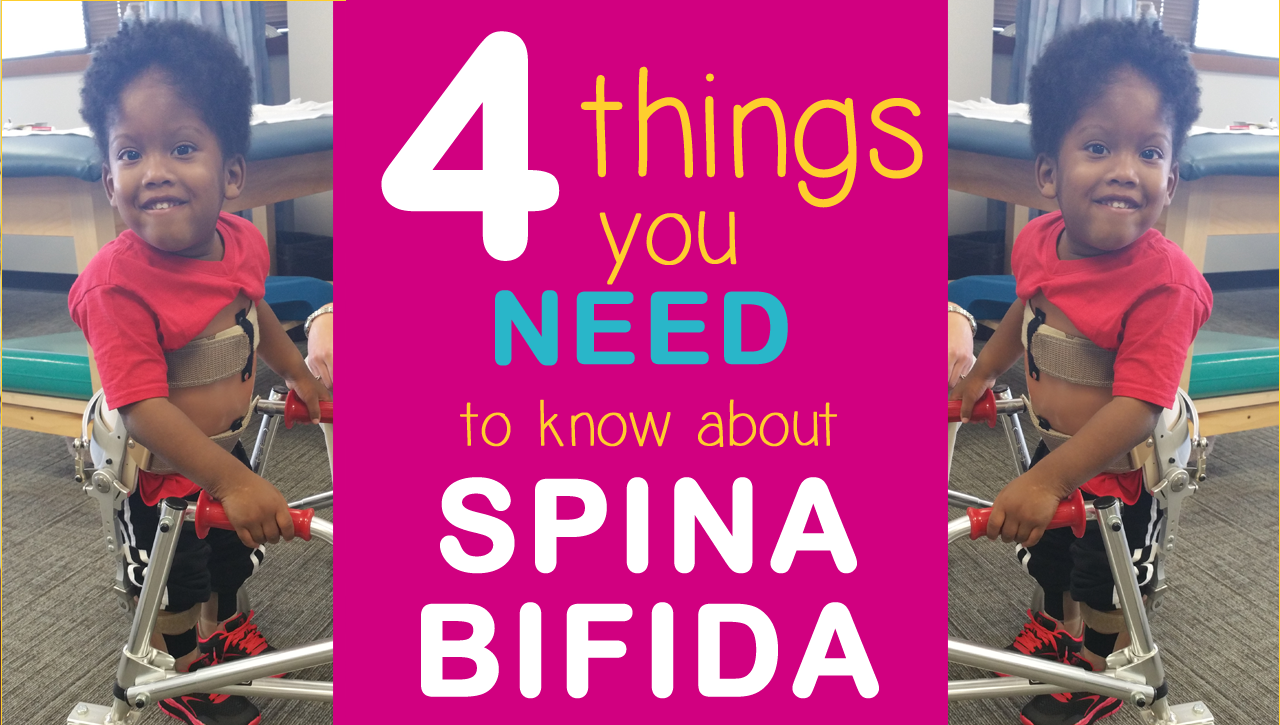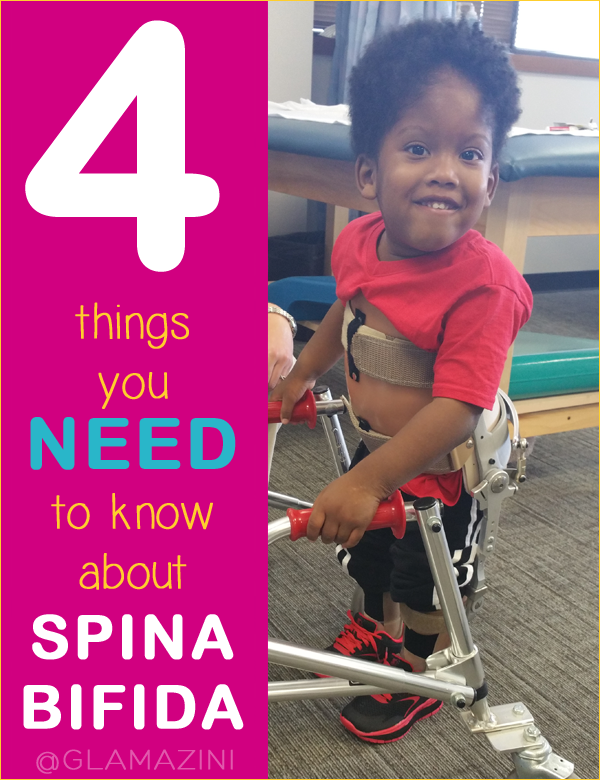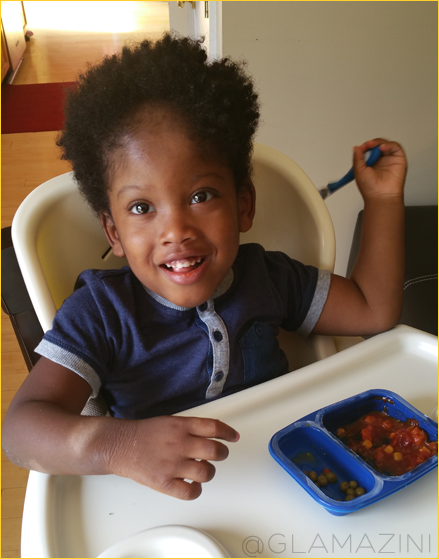
4 Things You Need to Know about Spina Bifida

Seriously people, look at this face!
It took me much longer to write this blog post than I’d thought it would. I started out with a longer fact-driven list including things like: spina bifida is the most common permanently disabling birth defect in the U.S., the words “spina bifida” mean split spine, and there are 4 types of spina bifida …
I immediately felt drained.
I don’t spend much time hovering on these sorts of statistics nowadays. My son is just short of 4 years old, so I’m passed all the dread and bad reports, and more likely to be fixated on purchasing my tiny man yet another pair of pumas in varied colors, making sure his wheelchair stays functional and fly, and signing up for classes called “Bubbles, Bubbles, and More Bubbles!”. #truestory
I am a mom,
and seeing that I had zero experience with kids until I had my son, I have the grace to be slightly ignorant of just how hard this whole journey really is (and honestly for that I’m thankful).
Then I remembered, I already covered all these sorts of bits and bobbles in my Spina Bifida video series a few years ago.
You can check it out here:
Answers To Your Questions About Spina Bifida
I touch on what exactly spina bifida is & the different types + what type my son has, development & surgery questions, cause & prevention, advice to parents & our routine.
Now back to the post.
I thought long and hard about what I really want you to know about SB … what you NEED to know … and it’s really not all the data, stats and numbers. It’s that my son is an awesome kid, he is not his diagnosis, and I’m so happy I did not “terminate my pregnancy” like they encouraged me to do pretty much every doctor’s visit from week 20-23.

Be still my beating heart HIS FACE!
So I present to you:
4 Things You NEED to Know about Spina Bifida
1. Spina bifida is not death sentence
Listen, if you’d told me this during my 20-week ultrasound as I sat on the table in disbelief listening to the doctor unleash a downpour of bad news in what my memory recalls was slow motion, I would’ve probably reached out and shook you by the neck for lying to my face BUT … fast forward 4+ years and my son is in the other room playing on his Scooot and repeating the words “double” and “round”, for some reason (strange kid) and … I kinda believe you now #whoknew. He went to school this morning, he ate ravioli a little while ago, he just threw a maraca across the floor then told it sorry #violentyetkind. All in all, it’s been a pretty crazy and oft time difficult ride, but it’s not a walk to the gallows like that doctor led me to believe years ago.
2. Spina bifida does not stop you from doing things, you just do them differently
This has been a HUGE lesson to me. I understand why people use the word “disabled”, which means “not or unable”, because I used it so definitely no judgment there. Now I’m more prone to say “differently-abled” because, as I watch my son, I realize he can do whatever he puts his mind to, just not always in the same way the masses do it. The same deal goes for the word “handicapped” which means disadvantaged. Read through the #ableismexists hashtag and see if it doesn’t open your eyes in some areas you never even considered. My eyes continue to open daily.
3. A wheelchair is not a tool of “confinement”
Everyone living with spina bifida does not use or choose to use a wheelchair. Many can walk with (or without) the assistance of braces, crutches and the like. My son uses a wheelchair (a pretty snazzy red one with wheels that light up btw). Even though he hasn’t verbalized this to me (yet), I’m gonna go out on a limb and speak for him. We HATE when people say someone is “confined” to a wheelchair. Confined means to be “restricted or cramped”. A wheelchair is a tool of independence, not confinement. My son is no more confined to his wheelchair than you are to your glasses. While you’re at it, go ahead and group this in with saying a person is “suffering with” spina bifida. My son is living with, thriving with, kicking butt with SB, so feel free to substitute those and file “suffering with” away for use never.
4. A person with spina bifida is just that … A PERSON … who just happens to have been born with spina bifida
Talk to them, say hi, be their friend, flirt, give them a compliment, fall in love, roll your eyes if they’re a jerk, ask them to pass you the salt at a restaurant, treat them like what they are, a perfectly imperfect human being just like the rest of us. There is no reason to treat anyone with any diagnosis as less than. I’m sorrowful to admit that, before I had my son, the differently-abled were invisible to me. I wasn’t nice or mean, I just did not see them. What a horrible but true confession, but thank God for grace and deliverance! I grieve for all the opportunities I missed to interact some pretty spectacular individuals, and I do not miss those opportunities now.
What do you think we NEED to know about Spina Bifida? Leave a comment and let me know!





